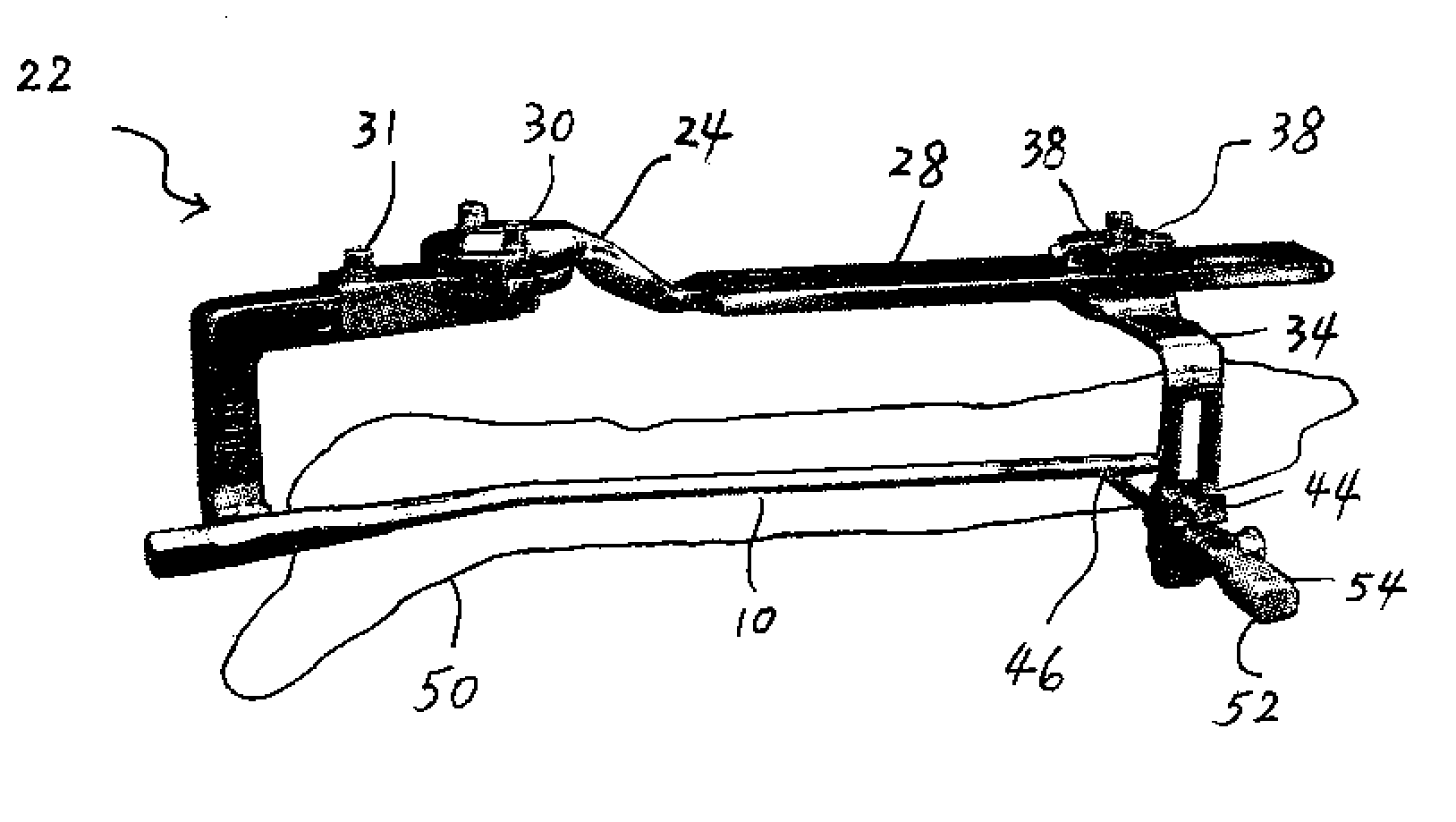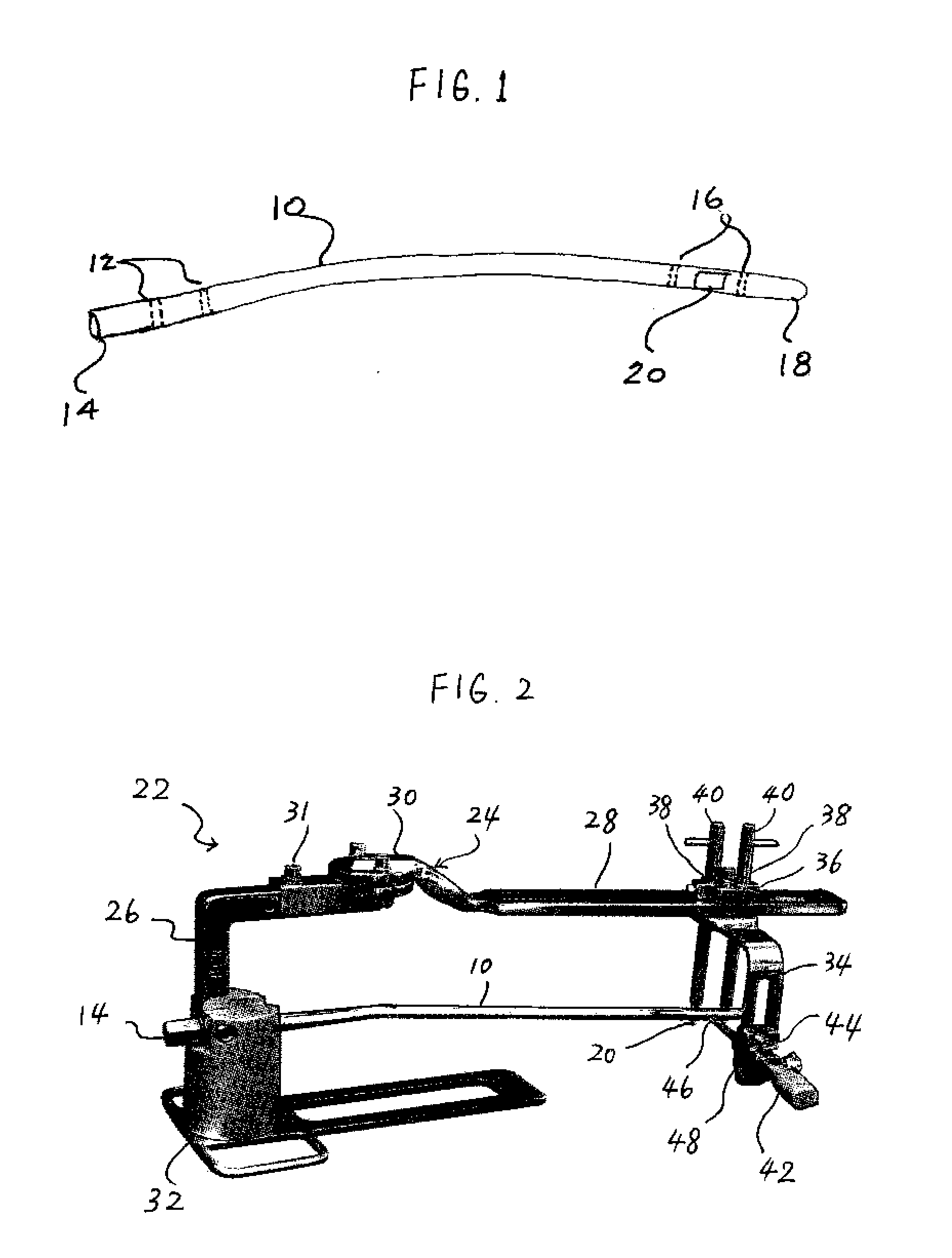Sensing Device for Medical Procedure
- Summary
- Abstract
- Description
- Claims
- Application Information
AI Technical Summary
Benefits of technology
Problems solved by technology
Method used
Image
Examples
Embodiment Construction
[0026]Referring now to FIG. 1, there is shown a perspective view of an exemplary intramedullary pin 10 that is to be emplaced within the bone of a patient. The intramedullary pin 10 is generally surgically emplaced within the tibia or femur bones to repair those bones and, in general, is comprised of, for example, a conductive metal, such as stainless steel, titanium and cobalt chrome.
[0027]In order to secure the intramedullary pin 10 within the bone of the patient, there are two holes 12 located at the proximal end 14 and two holes 16 located at the distal end 18. After the intramedullary pin 10 is surgically inserting into the bone, screws are passed through the holes 12, 16 to secure the intramedullary pin 10 within the bone. As such, since the intramedullary pin 10 is, at that time, located within the bone itself during the insertion of the screws, it is important that the physician be able to accurately locate the holes 12, 16 in order to properly align and insert the screws.
[0...
PUM
 Login to View More
Login to View More Abstract
Description
Claims
Application Information
 Login to View More
Login to View More - R&D
- Intellectual Property
- Life Sciences
- Materials
- Tech Scout
- Unparalleled Data Quality
- Higher Quality Content
- 60% Fewer Hallucinations
Browse by: Latest US Patents, China's latest patents, Technical Efficacy Thesaurus, Application Domain, Technology Topic, Popular Technical Reports.
© 2025 PatSnap. All rights reserved.Legal|Privacy policy|Modern Slavery Act Transparency Statement|Sitemap|About US| Contact US: help@patsnap.com



